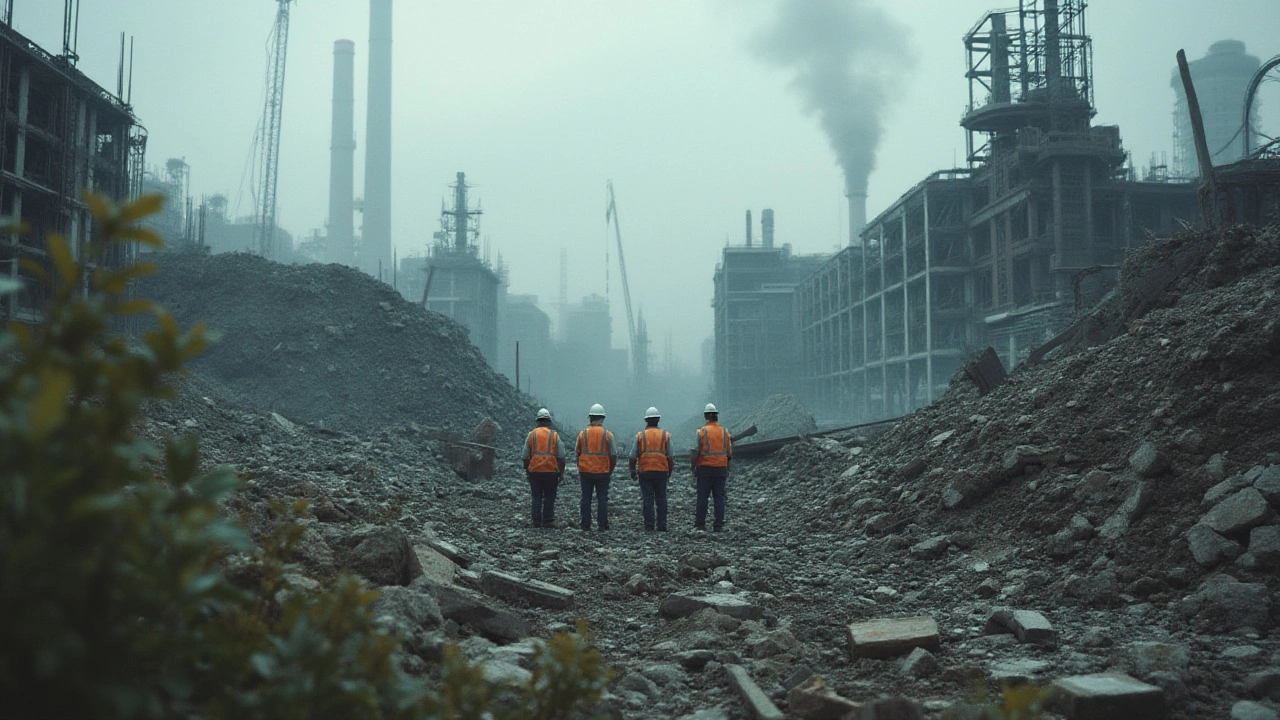Non Sustainable Construction: What It Is and Why It Matters
Ever walked into a new development and wondered why the walls felt cold, the garden was full of trash, and the whole place seemed wasteful? That’s non‑sustainable construction in action. It’s the kind of building that uses cheap materials, burns a lot of energy, and leaves piles of waste behind. The result? Higher bills, a bigger carbon footprint, and a landscape that doesn’t last.
Most people think the only problem is cost, but the real issue runs deeper. When builders ignore green methods, they waste water, cut down trees, and create heat islands that make whole neighborhoods hotter in summer. Those choices add up fast, turning a beautiful countryside into a concrete maze.
Why Non‑Sustainable Construction Is a Problem
First off, the materials. Cement and steel dominate most projects, and both release a ton of CO₂ during production. If a single apartment block uses 500 tons of cement, that’s roughly one million kilograms of carbon into the air. Then there’s insulation – cheap foam may look good, but it often contains harmful chemicals that leak over time.
Next, the waste. A typical site throws away up to 30% of its raw materials as scrap. That’s wood, metal, and drywall ending up in landfills, where they decompose and release methane – a greenhouse gas even stronger than CO₂. And let’s not forget water. Inefficient plumbing and poor rain‑water management mean more pressure on local supplies.
Finally, the long‑term cost. Buildings that aren’t energy‑efficient need more heating in winter and more cooling in summer. Homeowners end up paying higher utility bills, and the building’s resale value can drop because buyers look for greener options.
Simple Steps to Move Toward Sustainable Building
Good news: you don’t need a degree in engineering to make smarter choices. Start by asking the builder about the source of their materials. Recycled steel, reclaimed wood, or low‑carbon cement can cut emissions dramatically.
Look for insulation that’s natural – think sheep’s wool, cork, or cellulose. These options keep homes warm without the chemicals found in synthetic foams. If you’re renovating, try to reuse existing structures instead of tearing them down. It saves waste and preserves the character of the place.
Water‑saving fixtures are a must. Low‑flow toilets, rain‑water harvesting barrels, and smart irrigation systems reduce the strain on local supplies. Pair those with solar panels or a ground‑source heat pump, and the energy bills drop fast.
Finally, think about the site layout. Planting trees around a building provides shade, cuts cooling needs, and improves air quality. A well‑planned landscape also helps manage stormwater, preventing erosion and flooding.
Switching from non‑sustainable to sustainable construction doesn’t happen overnight, but every little change adds up. By spotting wasteful practices, demanding better materials, and choosing smarter designs, you help create homes that last longer, cost less, and keep the planet healthier.
